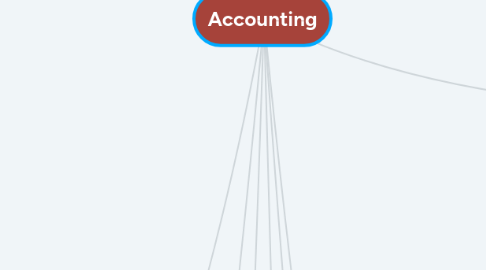
1. Different business
1.1. Not-For-Profit: Not-for-profit organizations are types of organizations that do not earn profits for its owners. All of the money earned by or donated to a not-for-profit organization is used in pursuing the organization's objectives and keeping it running. Exmaple: operation smile, unicef, make a wish
1.2. Merchandising: It is a business that purchases finished products and resells them to consumers. Example: grocery store, convenience store, H&M
1.3. Service: A commercial enterprise that provides work performed in an expert manner by an individual or team for the benefit of its customers. Example: hotels, hair salon, schools, hospitals
1.4. Manufacturing: the owner buys the raw material or component parts to manufacture a finished product. To function as a business the manufacturer needs to cover costs, meet demand and make a product to supply the market. Example: Toyota, Apple, Honda
1.5. IASB: The International Accounting Standards Board is the independent, accounting standard-setting body of the IFRS Foundation.
1.6. IFRS: are accounting standards issued by the IFRS Foundation and the International Accounting Standards Board.
2. Types of ownerships
2.1. Dffirent between unlimited liabilies and limited liabilities
2.1.1. Limited liability means the business owners' liability for debts is restricted to the amount they put into the business. With unlimited liability, the business owner is personally responsible for any loss the business makes.
2.2. Corporation: business that operates as a separate legal
2.2.1. Characteristics: Managed by a board of directors
2.3. Partnership: a business that is owned and operated by two or more individuals
2.3.1. Limited partnership: Limited liabilities Gereral Partnership: unlimited liabilities
2.3.2. Characteristics: Operated by two or more people who share costs and responsibilities. One vote per share. Liability can be limited or unlimited, depending on the agreement.
2.4. Sole Proprietorship: business that is owned and operated by one individual
2.4.1. Unlimited Liabilities
2.4.2. Characteristics: Owner receives all of the profits and is responsible for all debts. The easiest type of business to start and administer.
3. Trial balance: A trial balance is a bookkeeping worksheet in which the balance of all ledgers are compiled into debit and credit account column totals that are equal. A company prepares a trial balance periodically, usually at the end of every reporting period.
4. Chartered Professional Accountant (CPA): is the professional designation which united the three Canadian accounting designations that previously existed: Chartered Accountant, Certified General Accountant Certified Management Accountant.
4.1. Both left and right side equal to each other (IT'S A MUST)
4.2. Source documents: are an integral part of the accounting and bookkeeping process. Is the original record of a transaction
4.3. Business transaction:A business transaction is an economic event with a third party that is recorded in an organization's accounting system
4.4. Balance sheet: A balance sheet is a financial statement that reports a company's assets, liabilities and shareholders' equity.
5. Accounting cycle:The accounting cycle is a collective process of identifying, analyzing, and recording the accounting events of a company.
6. Roles in Accounting
6.1. Forensic Accountant
6.1.1. Forensic Accountants compile financial evidence, develop computer applications, to manage the information collected, and communicate their findings in form of reports or presentations
6.2. CFO
6.2.1. -Responsible for managing the financial actions of a company. -The CFO's duties include tracking cash flow and financial planning as well as analyzing the company's financial strengths and weaknesses and proposing corrective actions.
6.3. BookKeeper
6.3.1. Average Bookkeeper Salary: $19.86 per hour or $45,663/year (Canadian) Qualifications which most bookkeepers obtain include a Bachelor's degree in Accounting, as well as many hours in work experience. Some institutions which aspiring bookkeepers may attend include Conestoga College and Fanshawe College.You do not need a CPA designation to be a Bookkeeper. Bookkeepers manage and track your business’ financial transactions to make sure they are not just organized and complete but accurate as well.
6.3.2. Bookkeepers are often responsible for some or all of an organization's accounts, known as the general ledger. They record all transactions and post debits (costs) and credits (income). They also produce financial statements and other reports for supervisors and managers. The bookkeeper also makes the payroll calculations and prepares the payroll cheques and other payroll records.
6.4. Auditor
6.4.1. An Auditor usually receives a salary of between 48000 to 72000 based on tenure level. The average salaries of auditors are around 68,800 on a yearly basis.
6.4.2. Key skills for auditors: - Self-motivation, determination and confidence. - Ability to divide your time between work and study. Meticulous attention to detail. - A strong aptitude for maths. - Excellent problem-solving skills. - A keen interest in the financial system. - Ability to work to deadlines, under pressure.
6.4.3. An auditor is responsible for overlooking the books, procedures, and past records of companies in order to express an opinion on the company’s financial history. The auditor may need to examine source documents in order to confirm that accounting records have been done accurately. In the case that the auditor believes the company’s accounting system is flawed, the auditor should promptly revise it.
6.4.4. What do they do? An auditor is a person or a firm appointed by a company to execute an audit. reviews a company's financial statements, documents, data and accounting entries.
6.5. Comptroller
6.5.1. The controller reports material budgeting variances or expenditure variances to management. Many comptrollers have a are certified public accountants and posses certifications as a chartered financial analyst. The controller works for a corporation and is responsible for all the accounting activities of the corporation or organization.
6.6. Tax Accountant
6.6.1. Tax accountants work with clients to produce tax return documents that follow tax laws and regulations. Their job is to keep their clients updated on their return information, and work with them before tax time to get a plan that will help them reach their desired financial goals.
